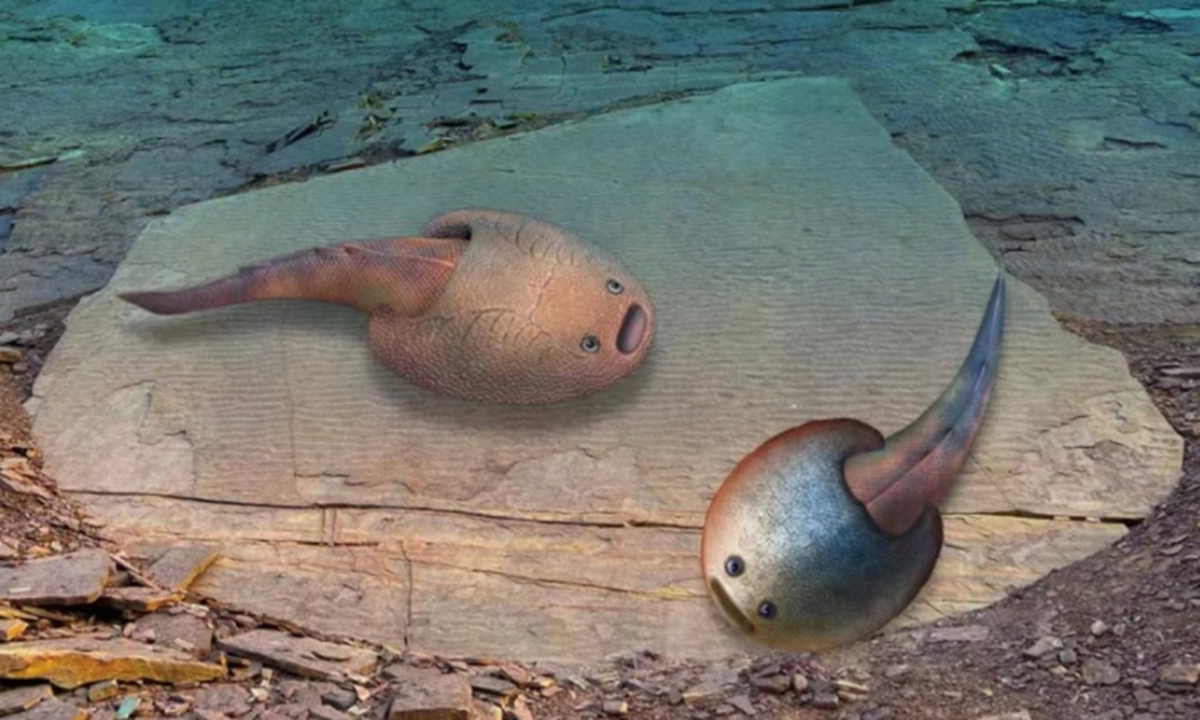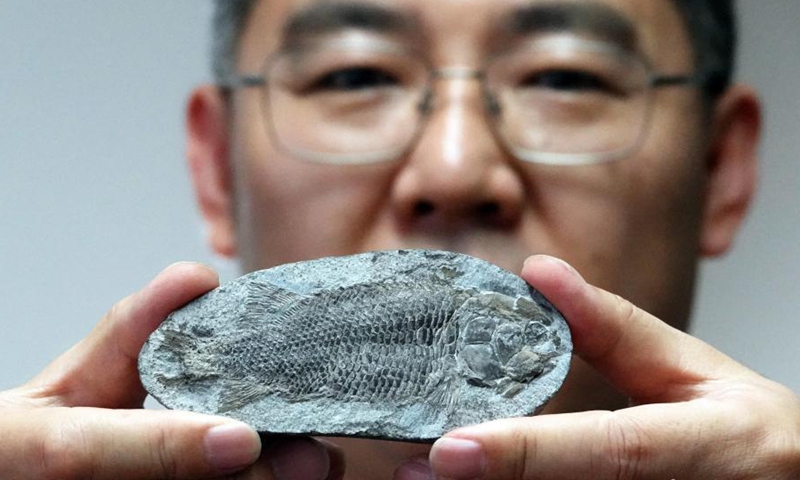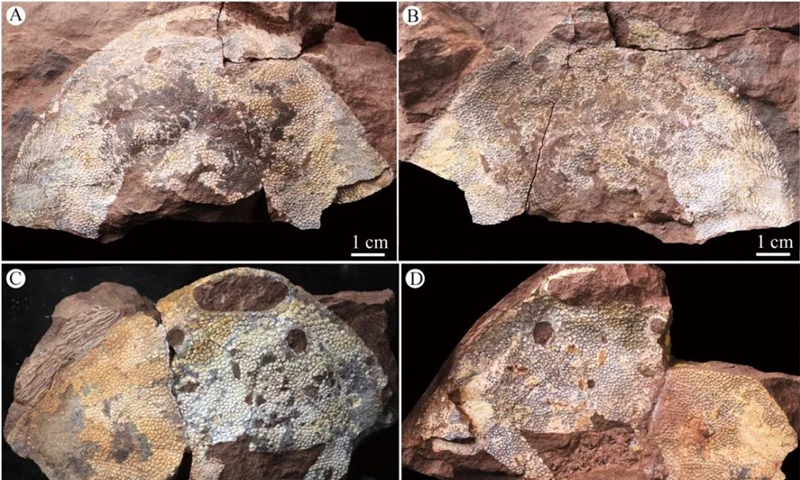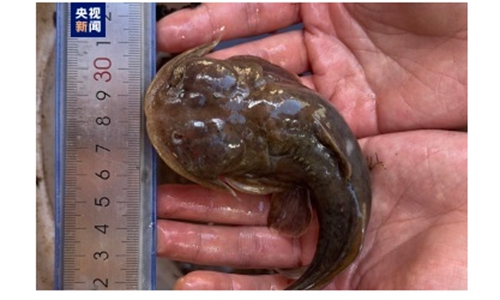
Photo: Courtesy of the Institute of Vertebrate Paleontology and Paleoanthropology
The fossil remains of an armored fish species dating to the Silurian Period was recently discovered by Chinese paleontologists in Kalpin county, Northwest China's Xinjiang Uygur Autonomous Region.
The fish species has been named Changxingaspis nianzhongi sp. nov. Led by researcher Gai Zhikun, a research group of the Institute of Vertebrate Paleontology and Paleoanthropology (IVPP), Chinese Academy of Sciences, discovered that the fish species lived around 438 million years ago.
With a flat body and long tail, the newly discovered fossil species has a distinctive look as it appears to have a median dorsal opening.
The fossil remains of Changxingaspis nianzhongi sp. nov. were spotted around Xinjiang's Tarim Basin, more specifically, in a geological formation called "Tataertag" in Kalpin county.
Changxingaspis nianzhongi sp. nov. represents the first record of the "Changxing" fish genus ever discovered in Xinjiang's Tarim Basin plate, making it a "rare find" in terms of the location where it was discovered as well as the well-preserved condition of the specimen, Gai emphasized.
"Regarding on our previous research experience, a large number of fossil samples of armored fish have been unearthed as small fragments. This has hampered research into this subject in the region," Gai noted.
Other than the niche "nianzhongi sp.nov" species, the fish family of "Changxingaspis" actually includes different members such as the Changxingaspis gui that was discovered in the Changxing county, Zhejiang Province.
"The Changxingaspis gui is a rather small type of armored fish that ranges around 30 millimeters in length. A well-preserved specimen of the fish is significant as it provides a look at the most primal characteristics of the armored fish genus," Zou Hesi, a paleontologist, told the Global Times.
There is an interesting story behind how both Changxingaspis nianzhongi sp. nov. and Changxingaspis gui were named.
In 1991, Chinese paleontologist Wang Nianzhong named Changxingaspis gui by combining the discovery location "Changxing" with "Gui," the surname of his mentor Gu Changdong. The choice of name showed the humble paleontologist's respect for his teacher.
This tradition of respect has been passed down to today, as Gai said that he wants to use Changxingaspis nianzhongi sp. nov. to commemorate Wang Nianzhong's contributions to the research sector.
Taking references from the study of Changxingaspis gui, Gai said that his Xinjiang research extends the "paleogeographical distribution" of this "Changxing" fish genus from the South China Block to the Tarim Block.
"The research finding also provides new evidence of the faunal exchanges that took place between these two blocks and the hypothesis of a united Tarim-South China Block during the early Silurian," Gai said.



